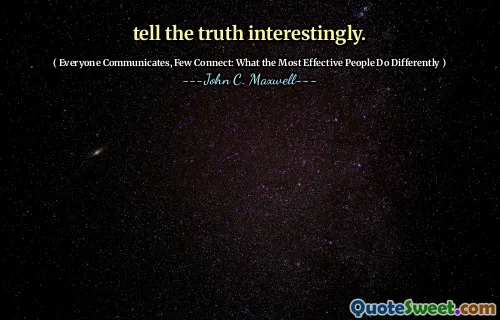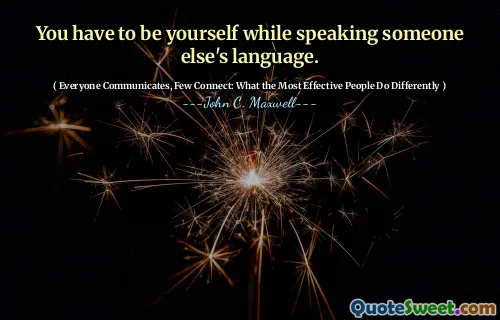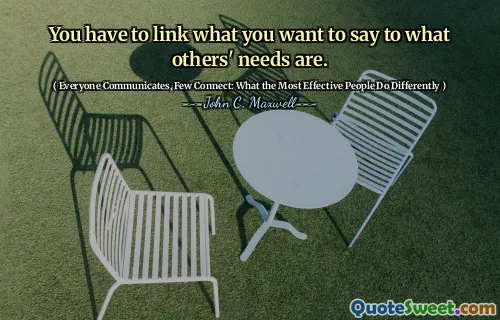
You have to link what you want to say to what others' needs are.
This quote underscores the fundamental importance of connecting with others on a level that resonates with their needs and concerns. Effective communication isn't merely about expressing one's thoughts; it is about ensuring that those thoughts are relevant and meaningful to the listener. When we tailor our message to address the interests, beliefs, and needs of others, we foster a sense of understanding and trust that facilitates genuine connection. In many contexts—whether in leadership, sales, counseling, or everyday conversations—people are more receptive when they feel understood and when what is being communicated adds value or clarity to their experiences.
Connecting your message to the needs of others requires active listening and empathy. It compels us to step outside our own perspectives and consider what truly matters to the person on the other end of the conversation. This approach not only makes communication more effective but also strengthens relationships by demonstrating that you care about their concerns. For educators, leaders, and communicators, mastering the art of linking messages to others' needs transforms interactions from trivial exchanges into meaningful dialogues.
In essence, the idea is rooted in the concept that effective communication is a two-way process. It is about adaptation and relevance. When we find ways to align our messages with others' needs, we transform our communication from a monologue into a dialogue, paving the way for mutual understanding and cooperation. This skill is invaluable in creating impact—whether persuading, inspiring, or simply being understood.
Drawing from the principles outlined in 'Everyone Communicates, Few Connect' by John C. Maxwell, the practice of linking messages to the audience's needs distinguishes those who merely talk from those who truly connect and influence. It signifies the shift from telling to engaging—conversation as an act of service and relationship-building rather than a one-sided imposition.








